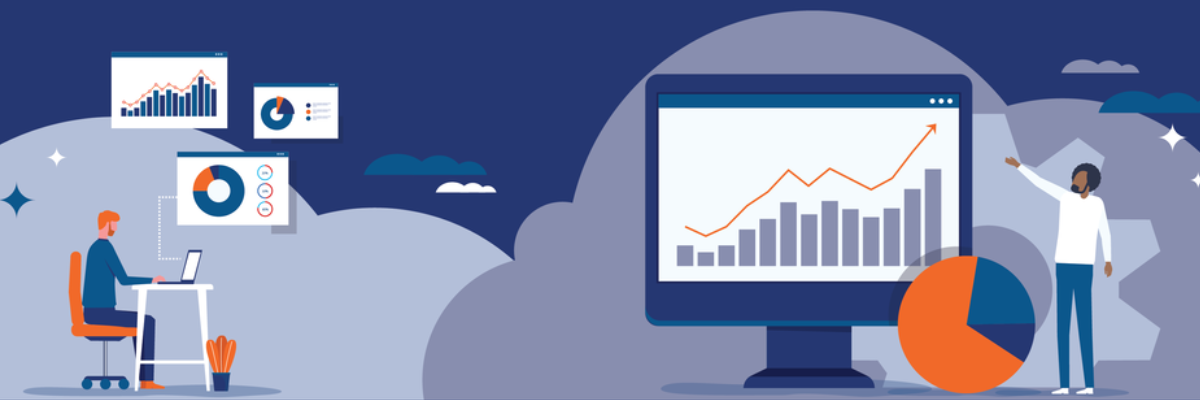When looking at your nonprofit organization’s financial statement, your eyes typically go to the bottom line. Are we on budget or not? But that number at the bottom is not the whole story.
The goal of data visualization is to help you deliver great information in a way your audience can receive it. By presenting your organization’s financial data through clear and engaging graphics, your audience is more likely to understand the issue and take meaningful action.
1. Tune out the noise and turn up the story
Just like when you invite friends over for dinner, you clear out the clutter so everyone can focus on the food and conversation. Identify the story that needs to be told and remove the rest. Make it obvious where your audience should direct their attention.
2. Use a headline to get to the point.
If your Board member arrives 10 minutes late, they should be able to look at the headline and know the key points of the data. Your headline should be short—no more than a simple sentence—and get to the crux of the issue.
3. Help your audience interpret the information explicitly.
Include a short paragraph that gets to the point of your graphic. Highlight the main issue and why it is something that needs their attention.
4. Always give credit.
Every graphic you create—whether it is for a Board report or an Annual Report—should include both the source of the information and credit to the person who built it. Even if the data is from your fund accounting software, your audience needs to know where it came from. You never know where your graphic might end up.
5. Add notes to proactively address potential questions.
As you are putting together your graphic, you might know some of the questions your audience is likely to ask. For example, on your graph showing the shrinking percentage of your unrestricted funds, you know your Board will ask whether you are looking at lowering your operating costs. The notes section helps you get in front of those questions and shows you’ve done your due diligence.
6. Make the full report available.
A strong graphic is not a replacement for the full financial data. Your data has a story to tell, and you can get your audience’s attention with a clear and engaging graphic. But be prepared to have all the appropriate financial data ready for your stakeholders to dig into if they want to.
7. Work with your marketing team for design best practices.
To help you streamline your processes for creating graphics, understand your brand colors and fonts. Having a consistent look and feel across all your materials appears more professional, and it keeps you from getting stuck trying to decide which color to make your lines.
This article was written for Blackbaud March 2023
DESIGN RESOURCES
In addition to the reporting functionality native to your fund accounting system, here are tools to create engaging data visualizations:
Datawrapper.de: Create powerful charts, tables, and maps and export to PNG with a free account. The free account has a built-in color-blindness checker.
Infogram: Use the drag-and-drop tool to build a variety of charts and maps. Use their templates or upgrade to create a branded template.
Visme: A drag-and-drop tool that can help with graphs and charts as well as full reports and datasheets. Easily add your brand colors and fonts.
The Noun Project: Add icons to your graphics and explanations to help convey your message. Free to use when you cite the designer or pay a small fee for use without attribution.
About the Author
William (Bill) Schwab, CPA, MBA, is the Manager of YPTC’s Data Visualization Group (DVG) and has more than 20 years of finance and accounting experience. Bill joined YPTC in 2015 and worked as an Associate and Manager in the Philadelphia market before joining DVG in 2021. He started his accounting career at PricewaterhouseCoopers (PwC) before moving into industry where he served in various financial planning, corporate accounting, and internal audit roles.
Bill is a member of both the American Institute of CPAs (AICPA), the Pennsylvania Institute of CPAs (PICPA), and is a licensed Certified Public Accountant in Pennsylvania. He also holds the Chartered Global Management Accountant (CGMA) designation. Bill earned his master’s degree in Business Administration from La Salle University and his bachelor’s degree in Accounting and International business from Penn State University. Bill is a frequent speaker at nonprofit events and has appeared on several episodes of American Nonprofit Academy’s The Nonprofit Show.






